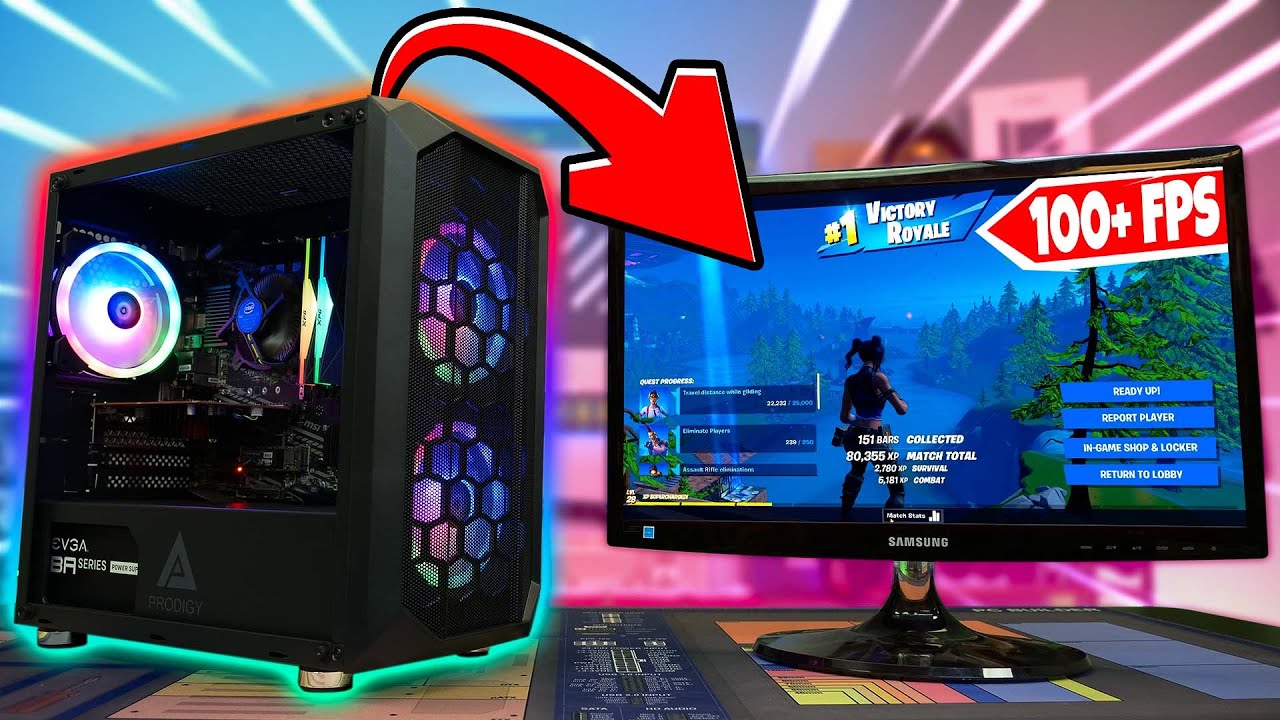Crafting Performance on a Budget: A Comprehensive Guide on How to Build a Cheap Gaming Computer

Introduction:
Gaming has evolved into a dynamic and immersive experience, and building a gaming computer on a budget doesn’t mean sacrificing performance. This comprehensive guide aims to empower you to assemble a cost-effective gaming rig without compromising on quality. From selecting budget-friendly components to optimizing performance, we’ll cover every aspect of building a cheap gaming computer that delivers impressive gameplay.
Chapter 1: Understanding the Basics of Gaming PC Components:
Before diving into the building process, it’s essential to grasp the fundamental components that make up a gaming computer. This chapter will provide an overview of the essential parts, including the CPU, GPU, RAM, storage, motherboard, power supply, and cooling solutions. Understanding the role of each component lays the groundwork for informed decision-making during the building process.
Chapter 2: Setting a Realistic Budget:
Establishing a budget is the cornerstone of building a cheap gaming computer. This chapter will guide you through the process of determining a realistic budget based on your gaming preferences, ensuring that you allocate resources efficiently and prioritize components that significantly impact gaming performance.
Chapter 3: Selecting a Gaming CPU:
The central processing unit (CPU) is a crucial element that influences overall system performance. This chapter will explore budget-friendly CPUs that strike a balance between price and performance. Recommendations for both AMD and Intel CPUs will be provided, allowing you to choose based on your preferences and budget constraints.
Chapter 4: Choosing a Graphics Card (GPU) on a Budget:
The graphics card (GPU) plays a pivotal role in gaming performance. This chapter will introduce affordable GPU options that deliver commendable performance for budget-conscious gamers. Recommendations for entry-level and mid-range graphics cards will be provided, ensuring you find the best fit for your gaming needs.
Chapter 5: Opting for Budget-Friendly RAM:
Random access memory (RAM) contributes to smooth gaming performance. This chapter will guide you through selecting budget-friendly RAM options with adequate capacity and speed. Tips for optimizing RAM performance within your budget constraints will be discussed.
Chapter 6: Balancing Storage Solutions:
Storage is a critical aspect of gaming, and finding a balance between capacity and speed is essential. This chapter will explore budget-friendly storage options, including hard disk drives (HDDs) and solid-state drives (SSDs). Strategies for leveraging both types of storage to optimize performance and manage costs will be outlined.
Chapter 7: Choosing an Affordable Motherboard:
The motherboard serves as the backbone of your gaming PC, connecting all components. This chapter will provide recommendations for budget-friendly motherboards that offer essential features for gaming. Factors such as compatibility, expansion options, and build quality will be considered.
Chapter 8: Selecting a Power Supply Unit (PSU) Within Budget:
The power supply unit (PSU) is often overlooked but is critical for system stability. This chapter will guide you in choosing a budget-friendly PSU that meets the power requirements of your components while considering factors like efficiency and reliability.
Chapter 9: Efficient Cooling Solutions on a Budget:
Cooling is essential to prevent overheating and maintain optimal performance. This chapter will explore budget-friendly cooling solutions, including air coolers and budget-friendly liquid coolers. Tips for effective cooling within budget constraints will be discussed.
Chapter 10: Choosing an Affordable Case:
The case not only houses your components but also contributes to the overall aesthetic of your gaming PC. This chapter will introduce budget-friendly cases that offer a balance between functionality, airflow, and design. Factors such as cable management and ease of assembly will be considered.
Chapter 11: Building Your Cheap Gaming PC – Step by Step:
Now that you’ve selected budget-friendly components, it’s time to embark on the building process. This chapter will provide a step-by-step guide to assembling your gaming PC. From preparing the workspace to installing components and connecting cables, you’ll gain the confidence to build your system.
Chapter 12: Installing the Operating System and Drivers:
After assembling your gaming PC, the next step is to install the operating system and essential drivers. This chapter will walk you through the installation process, whether you choose Windows, Linux, or another operating system. Tips for optimizing system settings and ensuring driver compatibility will be covered.
Chapter 13: Optimizing Performance on a Budget:
Once your gaming PC is up and running, it’s time to optimize performance within budget constraints. This chapter will provide tips and tricks for maximizing gaming performance, including adjusting in-game settings, optimizing software, and leveraging free performance-enhancing tools.
Chapter 14: Future Upgrades and Expansion:
Building a cheap gaming computer doesn’t mean sacrificing upgradability. This chapter will discuss potential future upgrades and expansion options to enhance your gaming rig over time. Recommendations for cost-effective upgrades, such as adding more RAM or upgrading the GPU, will be explored.
Chapter 15: Troubleshooting Common Issues:
Even with careful planning, you may encounter challenges during the building process. This chapter will address common issues such as compatibility problems, hardware conflicts, and troubleshooting tips to help you overcome obstacles and ensure a smooth gaming experience.
Chapter 16: Community Resources and Support:
Building a gaming PC is a communal experience, and tapping into online resources and communities can be invaluable. This chapter will introduce forums, online communities, and resources where you can seek advice, share experiences, and troubleshoot issues with fellow gamers and PC builders.
Conclusion:
Congratulations! You’ve successfully navigated the process of building a cheap gaming computer that delivers impressive performance without breaking the bank. This comprehensive guide has equipped you with the knowledge to make informed decisions, select budget-friendly components, and assemble a gaming PC that meets your gaming needs. By following these steps and staying informed about new developments, you’ve taken a significant step towards enjoying an immersive gaming experience on a budget-friendly custom-built PC.




